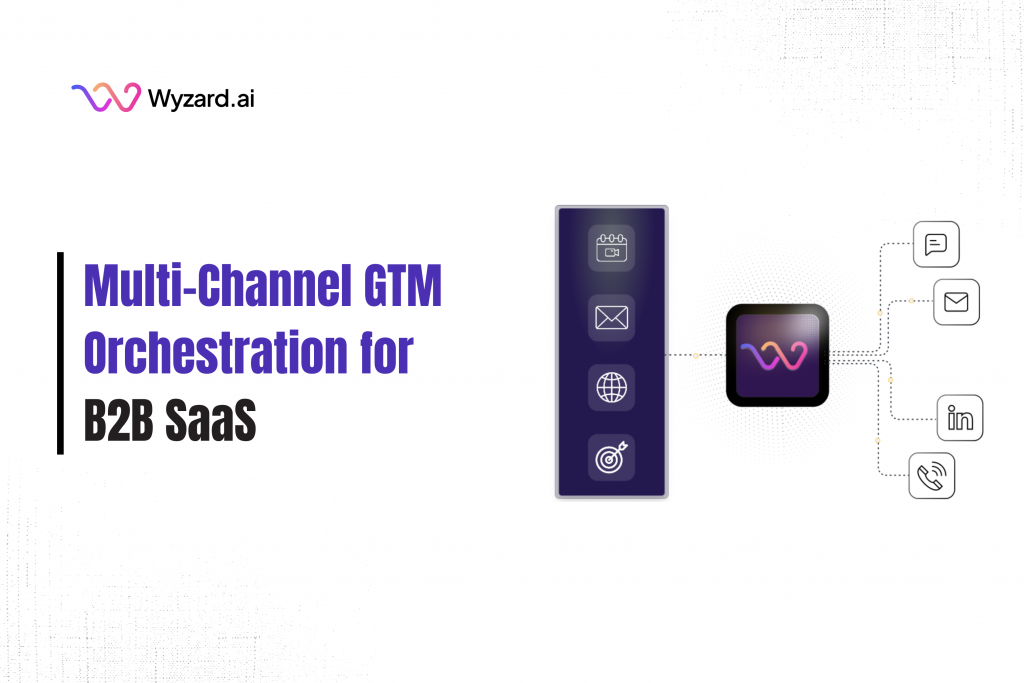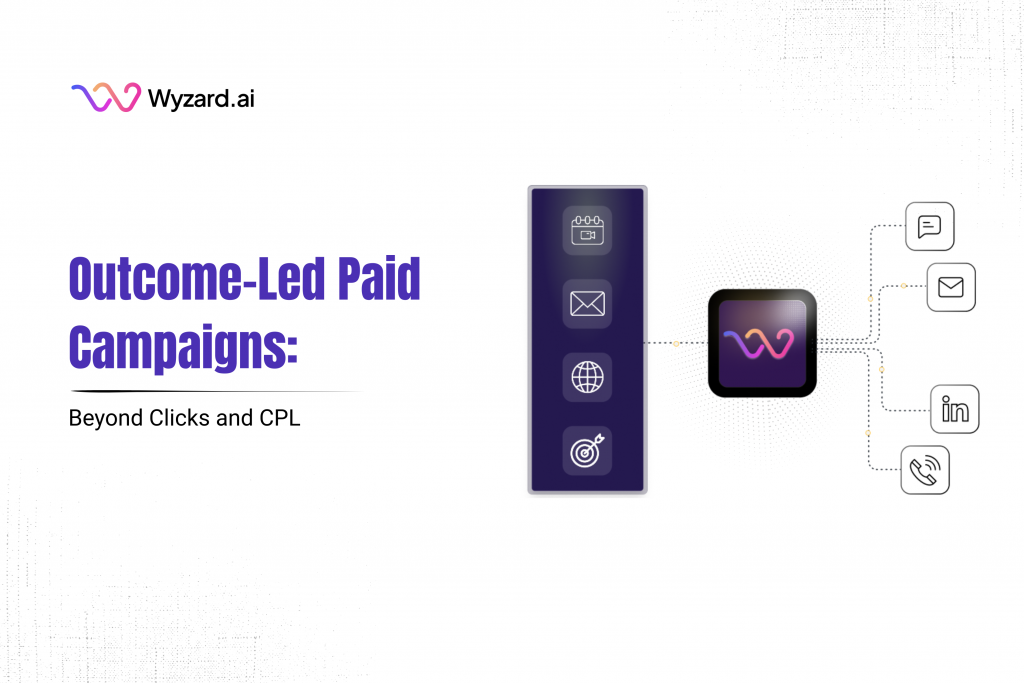If you run marketing or revenue for a B2B SaaS company, the goal is clear: turn GTM spend into ...
Best LinkedIn InMail Subject Lines in 2025 (With Real Examples)


Subscribe Now
LinkedIn InMail has become the secret weapon for B2B professionals who want to cut through the noise and connect with decision-makers. With response rates averaging 10-25% compared to cold emails’ dismal 3-5%, mastering LinkedIn InMail best practices can transform your outreach game. But here’s the catch: your subject line determines whether your carefully crafted message ever gets read.
Understanding LinkedIn InMail best practices for subject lines isn’t just helpful—it’s essential for anyone serious about building meaningful professional connections in 2025.
What Are InMail Best Practices?
InMail best practices are research-backed strategies that help B2B professionals craft compelling messages on LinkedIn, resulting in 3-5x higher response rates than traditional cold outreach. These practices encompass subject line optimization, personalization techniques, timing strategies, and value-driven messaging that respects the recipient’s time while demonstrating clear relevance to their business goals.
At their core, best practices for LinkedIn InMail focus on three key outcomes: capturing attention in crowded inboxes, building immediate trust through relevance, and creating enough value or curiosity to warrant a response. For SaaS marketers and growth teams, these strategies become even more critical when every conversation could translate to pipeline opportunities.
What Makes LinkedIn InMail Best Practices Essential in 2025?
The professional networking landscape has shifted dramatically. Decision-makers receive 50+ InMails weekly, making best practices for LinkedIn InMail more crucial than ever. Your subject line serves as the gatekeeper between your message and a potential game-changing conversation.
The psychology behind effective InMail LinkedIn best practices revolves around three core principles:
- Pattern interruption: Breaking through autopilot scanning mode
- Value signaling: Immediately showing what’s in it for them
- Trust building: Establishing credibility in 5-7 words
How to Write LinkedIn InMail Subject Lines That Get 50%+ Open Rates
Creating subject lines that consistently perform requires understanding what makes professionals click. Here are proven best practices for LinkedIn InMail subject lines that work:
The Mutual Connection Approach
“[Mutual Connection] suggested I reach out.”
- Open rate: 51%
- Why it works: Social proof creates instant trust
The Value-First Method
“Idea to reduce [Company]’s customer churn by 20%”
- Open rate: 48%
- Why it works: Specific benefit grabs attention
The Curiosity Gap Technique
“Quick question about your [recent achievement/post]”
- Open rate: 45%
- Why it works: Creates an information gap they want to fill
The Recognition Play
“Impressed by [specific accomplishment] at [Company]”
- Open rate: 43%
- Why it works: Everyone appreciates genuine recognition
LinkedIn InMail Best Practices for Different Goals (With Real Examples)
Different objectives require different approaches. Here’s how to tailor your LinkedIn mail best practices based on your specific goals:
For Sales Prospecting
Sales professionals using best practices for LinkedIn InMail report 2.5x higher response rates with these subject lines:
- “Noticed you’re scaling [department] at [Company]” (42% open rate)
- “[Company] + [Your Solution]: 15-minute exploration?” (38% open rate)
- “3 companies like yours increased revenue 30% using this” (40% open rate)
For Recruiting Top Talent
Recruiters following InMail LinkedIn best practices achieve better results with:
- “Your [specific skill] expertise caught our attention” (55% open rate)
- “[Company] needs someone with your [industry] background” (52% open rate)
- “Confidential: Senior role perfect for your experience” (48% open rate)
For Partnership Opportunities
Building strategic partnerships requires different best practices, LinkedIn InMail approaches:
- “Potential synergy between [Their Company] and [Your Company]” (44% open rate)
- “Partnership idea: [specific value proposition]” (41% open rate)
- “[Mutual connection] thought we should connect” (46% open rate)
The Science Behind High-Converting InMail LinkedIn Best Practices
Understanding the psychology behind successful LinkedIn InMail best practices helps you craft subject lines that resonate on a deeper level. Research from behavioral psychology shows that effective subject lines trigger specific cognitive responses:
The Principle of Reciprocity
When you mention something specific about their work or company, recipients feel obligated to reciprocate with attention. Subject lines like “Loved your insight on [specific topic]” leverage this principle effectively.
The Scarcity Effect
Creating urgency without being pushy increases open rates. Subject lines mentioning time-sensitive opportunities or exclusive information tap into FOMO (fear of missing out).
The Personalization Factor
Using the recipient’s first name increases open rates by 22.2%. However, modern best practices for LinkedIn InMail go beyond basic personalization to include:
- Recent company news or achievements
- Shared group memberships
- Common connections
- Industry-specific challenges
Common Mistakes That Kill Your Best Practices for LinkedIn InMail
Even experienced professionals make these subject line mistakes that violate core InMail LinkedIn best practices:
Being Too Vague
[X] “Quick question”
[√] “Quick question about your MarTech stack”
Sounding Like Spam
[X] “Amazing opportunity!!!”
[√] “Opportunity at [Company] for [specific role]”
Making It About You
[X] “I’d love to pick your brain”
[√] “Your expertise in [field] could solve our [challenge]”
Using Clickbait
[X] “You won’t believe this offer.”
[√] “How [Company] increased conversions 40% in 30 days”
How to Scale Best Practices LinkedIn InMail Without Losing Personalization
The challenge for growing companies is maintaining personalization while scaling outreach efforts. This is where modern LinkedIn InMail best practices intersect with intelligent automation.
Smart marketers are discovering that AI-powered tools can help maintain the personal touch while handling higher volumes. For instance, Wyzard.ai Agentic InMail feature enables teams to craft personalized subject lines at scale by analyzing recipient profiles and suggesting contextually relevant approaches.
Key strategies for scaling include:
Template Variability
Create 10-15 subject line templates for each use case, then customize the variables:
- “[First Name], question about [Company]’s [recent news]”
- “Connecting [Your Company] with [Their Company]’s goals”
- “[Mutual Interest] professionals helping each other”
A/B Testing Framework
Continuously test different approaches:
- Questions vs. statements
- Short vs. detailed
- Formal vs. conversational
- Value-focused vs. curiosity-driven
Performance Tracking
Monitor these metrics to refine your best practices for LinkedIn InMail:
- Open rates by industry
- Response rates by subject line type
- Time-of-day performance
- Day-of-week variations
Conclusion
Mastering LinkedIn InMail best practices for subject lines is an ongoing process that requires testing, refinement, and adaptation to your specific audience. The examples and strategies shared here provide a foundation, but your unique value proposition and target audience will ultimately determine what works best.
Remember, the goal isn’t just to get your InMail opened—it’s to start meaningful conversations that drive real business outcomes. By focusing on personalization, value, and authenticity in your subject lines, you’re setting the stage for productive professional relationships.
Ready to transform your LinkedIn outreach strategy? Modern B2B teams are leveraging AI-powered solutions to scale their personalized engagement efforts. Discover how wyzard.ai helps SaaS companies automate intelligent conversations while maintaining the human touch that builds lasting business relationships. Because in 2025, the companies that win are those that combine the best of human insight with intelligent automation.
FAQ
Keep subject lines between 40-50 characters for optimal mobile display. Shorter subject lines (under 7 words) typically see 15% higher open rates since they’re easier to scan quickly. Test different lengths with your specific audience to find what resonates best.
Wait 5-7 business days after your initial InMail before sending a follow-up. Most professionals respond within 48 hours if interested, but busy executives may need more time. Send a maximum of two follow-ups, spacing them one week apart to avoid seeming pushy.
While emojis can increase open rates by 20% in some industries, they’re risky for B2B outreach. Tech and creative industries respond better to emojis than finance or legal sectors. When in doubt, stick to professional text-only subject lines for initial outreach.
Tuesday through Thursday between 8-10 AM and 4-6 PM local time, see the highest engagement rates. Avoid Mondays (inbox overload) and Fridays (weekend mindset). Consider your recipient’s timezone and industry-specific patterns when scheduling outreach.
Mentioning competitors can backfire and appear unprofessional. Instead, reference industry trends or common challenges without naming specific companies. Focus on your unique value proposition rather than comparing yourself to others in your subject line.
Other blogs
The latest industry news, interviews, technologies, and resources.
Form-Free GTM: Designing Frictionless Conversion Flows
A visitor lands on your pricing page. They are ready to talk, not to wrestle with a 12-field form. ...

December 8, 2025
Outcome-Led Paid Campaigns: Beyond Clicks and CPL
You put serious money into paid media. Dashboards show strong CTR and healthy CPL. The next slide hits and ...

 We’ve secured funding to power Signal-to-Revenue AI to GTM teams globally. →
We’ve secured funding to power Signal-to-Revenue AI to GTM teams globally. →


